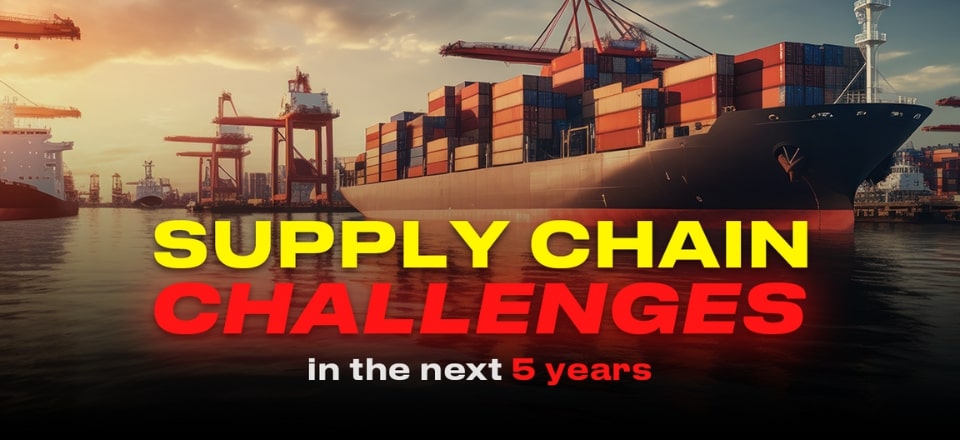The dynamics of the supply chain have seen remarkable expansion and ongoing enhancement over the years. Ever considered the future path of the supply chain, particularly with the swift evolution and innovation in our current era? What obstacles could the sector encounter over the next five years?
Don’t miss out on this opportunity—watch our video with Maria Villablanca, as we discuss the expected challenges the supply chain industry might face in the near future.
In our quest to forecast the future of supply chain management, we recently sat down with Maria Villa Blanca, a seasoned expert in the field. Her extensive experience provides a comprehensive view of the significant supply chain challenges we can expect over the next five years.
Geopolitical Risks and Their Impact
Maria: You turn on the news and you see that people are talking about supply chain all over the place. There’s some obvious ones, right? So geopolitical risk is probably the biggest one. If there’s a war in the Middle East, ships can’t get through the Suez Canal. They have to go down through a different route, adding more time and cost. If there’s a war somewhere, you can’t get your raw materials from a certain place, you’ve got to find another source, impacting the supply chain. So I think the first one is geopolitical risk.
Compliance and Sustainability Pressures
Maria: The second one is regulation and regulatory compliance. There’s talk about carbon emissions goals, and different regulations are coming into place. Supply chains will be under the magnifying glass of governments to be more transparent. They need to understand their suppliers and their suppliers’ suppliers from a sustainability perspective. Data transparency and visibility within the supply chain will be key. Whether it’s control risk or sustainability initiatives, regulatory compliance is crucial.
Integrating AI and Workforce Adaptation
Rob: Where do you see the main use of that?
Maria: Generative AI in crunching data, assessing different types of routes, decision making, scenario planning, forecasting, and even day-to-day jobs. Repetitive tasks will be given to generative AI, freeing people to make better decisions. Generative AI is coming. It’s here! I already use generative AI for many things, and it’s changed the way I work.
Maria: The biggest, maybe non-obvious thing, and the biggest risk or trend for supply chain in the next five years is people. How we adapt to the changing environment, technology, decision making, leadership challenges, and changes in consumer behavior. The human element of the new supply chain is the biggest unknown.
Rob: In this part of the world, we’re seeing a shortage of good people to bring into the supply chain. AI technology might take over some roles, but we still need human input.
Maria: Absolutely. AI will augment human capabilities, not replace them. Collaboration between humans and AI is essential for optimizing supply chains.
Addressing these supply chain challenges will require a multifaceted approach. Embracing transparency, regulatory compliance, and advanced technologies like generative AI, while also adapting to workforce changes, will be crucial. As Maria Villa Blanca emphasized, balancing technological advancements with human input is key to building resilient and efficient supply chains for the future.
Check out the video above for more details!
Related articles on this topic have appeared throughout our website, check them out:
- 9 Steps to Follow When Preparing for Supply Chain Project Management
- No Supply Chain Strategy? Here’s How to Develop One
- The 3 Pillars of Supply Chain Management (And Why Their Alignment Matters)
- How Artificial Intelligence is Boosting Supply Chain Performance
- You and Your Supply Chain Career
Editor’s Note: The content of this post was originally published on Logistics Bureau’s website dated April 03, 2024, under the title “Supply Chain Challenges in the Next 5 Years with Maria Villablanca“

